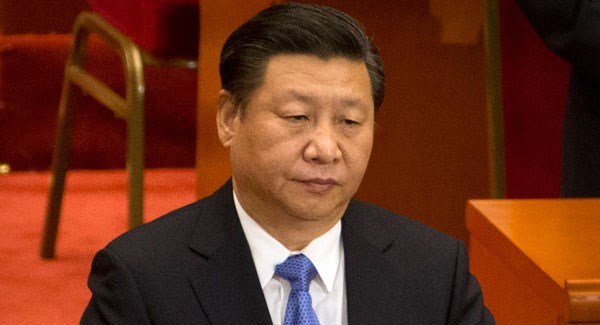China wants to dominate the world. It wants to be an absolute superpower that dominates the global economy. Nothing illustrates China’s expansionist dreams more accurately than Chinese President Xi Jinping’s Belt and Road Initiative (BRI) that aims to lay debt traps in the garb of connectivity projects, and stamp Beijing’s authority in every corner of the world.
But Beijing might have to cut down in its global expansionist dreams, in general, and the BRI, in particular. For decades, China’s economy was growing at a stunning pace allowing the paper dragon to harbour superpower and expansionist ambitions. But according to a South China Morning Post report, Xi Jinping’s populist rule has led to an economic slowdown in China, coupled with a drastic rise in domestic debt. Simply put, Beijing has lost the capacity to finance its global domination dreams.
Last week, Chinese President Xi Jinping sought to make a grand announcement about the BRI. He said, “China will further harmonise policies, rules and standards with [Belt and Road Initiative] partners, and deepen effective cooperation with them on infrastructure, industry, trade, science and technological innovation, public health and people-to-people exchanges,” during a keynote address at the Asia-Pacific Economic Cooperation (APEC) forum.
At this point, it must be kept in mind that China had originally conceptualised the BRI, or what was earlier known as One Belt, One Road (OBOR), as a regional connectivity plan. But with the passage of time, it has become clear that the BRI is actually an instrument of Beijing’s foreign policy. It is a humongous lending scheme wherein China advanced unsustainable debt to fragile or small economies.
But the slowdown in Chinese growth and an unsustainable rise in China’s domestic debt means that Beijing will have to cut back on lending. The level of Chinese debt is much higher than you think.
As per an Institute of International Finance (IIF) report, non-financial corporate debt in China rose to over 165 per cent of its Gross Domestic Product (GDP) in the third quarter of 2020. The debt stood at 150 per cent of China’s GDP in the same quarter last year. The growth of debt in China has outpaced that in all emerging economies and developed markets.
The total Chinese debt across household, government and non-financial corporate sectors has reached an uncontrollable high of nearly 290 per cent of the GDP. According to Washington-bases IIF, it stood at 255 per cent last year.
Alicia Garcia-Herrero, Chief Economist for Asia-Pacific at French financial firm Natixis said, “China will need to be more selective in the projects it can finance, especially in emerging economies. [Belt and Road Initiative] countries in the midst of major infrastructure projects, and also indebted due to them, may no longer find the resources available to continue with these projects.”
A significant decline in China’s Belt and Road activity is already visible. This year, the number of new contracts signed by Chinese firms in the first nine months in 61 countries “along the belt and road” has shrunk by 29 per cent compared to last year. The value of contracts signed by Chinese firms has also gone down by 17.5 per cent year on year.
Moreover, the two primary Chinese policy banks- the China Development Bank and the Export Import Bank, had started to reduce lending even before the Pandemic. After 2016, when lending peaked, these two Chinese banks have cut down on lending activities.
The BRI is plagued by a number of issues, including growing criticism from recipient countries and concerns over balance of payments. Beijing has thus directed its lenders to be more selective in Belt and Road financing.
Xi Jinping’s BRI is thus in deep trouble as China’s domestic debt crisis gets the better of the Chinese Communist Party.
